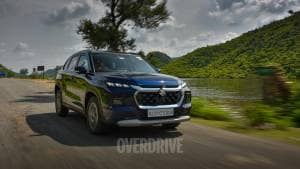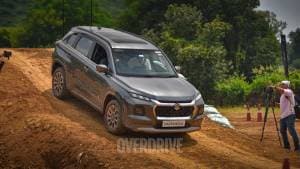2022 Maruti Suzuki Grand Vitara review - does it live up to the name?
The Maruti Suzuki Grand Vitara and its sibling the Toyota Hyryder, are probably the most awaited crossovers of 2022. At least as far as the underpinnings go, these siblings know the Indian terrain quite well and with benchmarks like the Creta/Seltos to beat, these cars are quite well-specced too - far more than what you expect from either of these Japanese compatriots. But before we get to it, let's take a step back and talk about the platform.
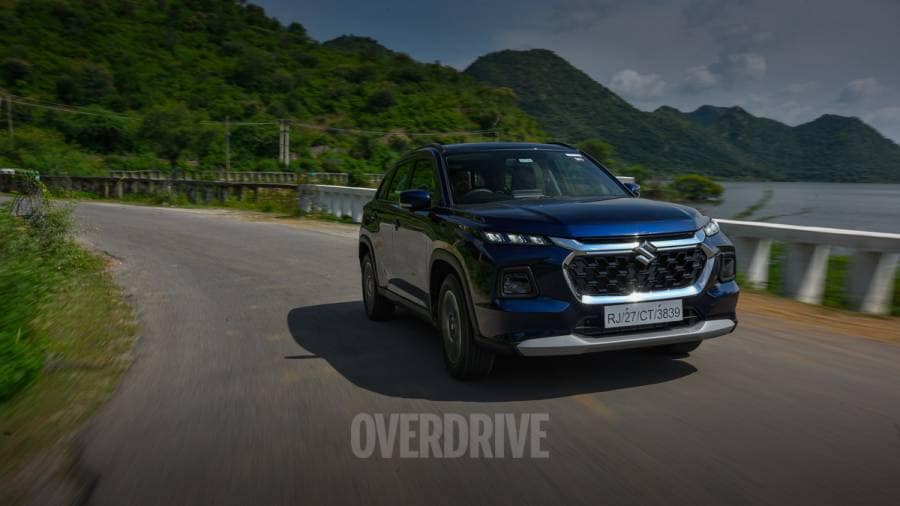
Platform and Design
Remember the S-Cross? It's underpinned by Suzuki's Global C platform, which also spawned both iterations of the Brezza. This platform has also scored better results at the crash tests compared to the newer Heartect platform used on Maruti Suzuki's hatchbacks. The Global C platform was also used to create a new S-Cross for the global markets - a car that's larger and more stylish the outgoing model. Maruti Suzuki has taken it a step further and spiced it up the global S-Cross to suit Indian tastes and the resultant car is the Grand Vitara you see here.
So what you get is bolder styling with a more trendy design theme with the DRLs in the brow and the headlight in the bumper. At the rear, the sleek streak of LED taillights echo a bit of a Porsche Cayenne/Range Rover Velar inspiration and these coupled with the tastefully done Grand Vitara badging make the tail appear premium like the rest of the car. The side profile shows off a longish front overhang that misbalances what could have been a nice two-box SUV-inspired design. But it isn't too hard to live with because the handsome 17-inch wheels will usually divert attention away from it and they fill up the squared-off wheel wells quite nicely.
While the shape of the wheel arches and the 2,600mm wheelbase is similar to the international S-cross, the bodywork designed in India for the Grand Vitara not only lends it a more SUV-like form but also gives it marginally larger dimensions. That makes the Grand Vitara and its platform sibling, the Toyota Hyryder, two of the largest cars in the segment. While the design is a personal preference, I believe the relatively more elegant-looking Hyryder will appeal to the more mature audience, while the sportier-looking Grand Vitara will attract the younger crowd.

Cabin
While these twins don't have the massive stance of the Tata Harrier, there is no doubt that they look quite handsome to take on the Koreans, and more proportionate than the MPV-ish looking MG Hector.
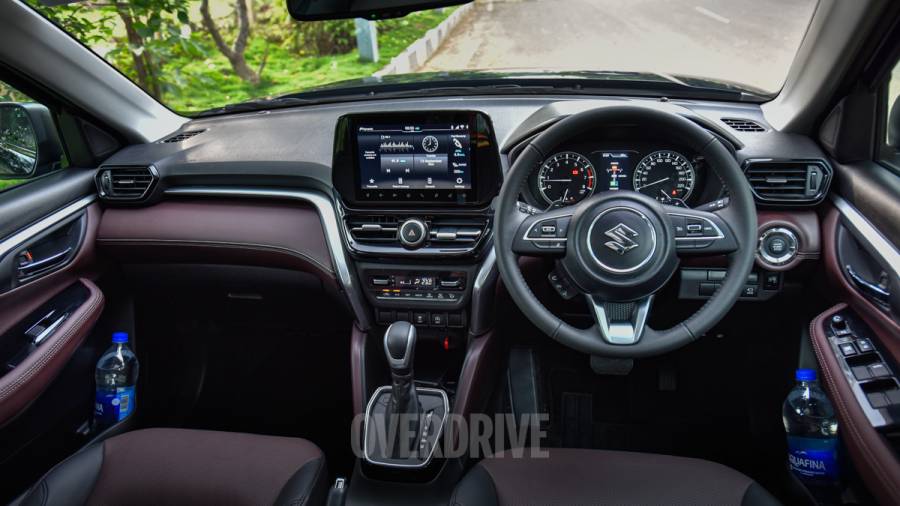
That said, compared to the Creta, Seltos or even the Brezza the window line is low and so is the seating, relatively. The small disadvantage is that it doesn't give you a taller view of the road like a typical SUV, but the big advantage is that ingress and egress are very easy. The car-like feeling was one of the biggest draws of the outgoing S-cross and it will be for the Grand Vitara too.
Once inside the cabin, you will notice familiar Maruti Suzuki elements in the switchgear and steering wheel. Going with the theme, the dashboard has a grid-like layout which maximises space and depending on the variant you choose you to get a choice of all-black or maroon-on-black combinations. Save for a couple of dashboard and door panels in the common touch areas, the rest of the elements are made of scratchy plastics which may make you feel shortchanged at this price point. Nevertheless, like most Maruti Suzuki cars, these panels are put together quite nicely with no rough edges or inconsistent panel gaps to complain about and are likely to withstand the test of time like all of their stablemates.
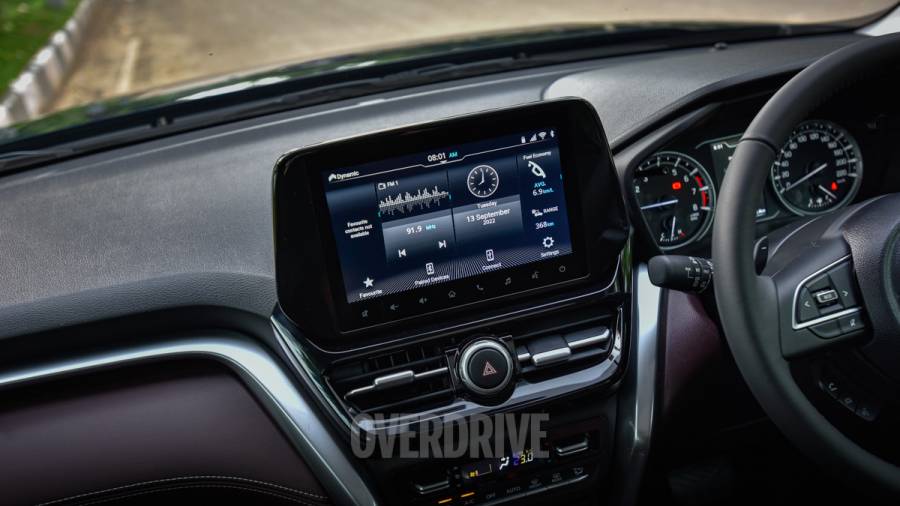
The 7-inch infotainment is now familiar too and gets wireless Apple CarPlay and Android Auto capabilities, a few connected tech features for tracking and fencing, and the ability to install certain apps. Low and mid-level trims get two-pot instrumentation with a 4-inch multi-info display that's very similar to other Maruti cars, while the range-topper gets fully digital instrumentation that has a very Toyota layout to it. There is a heads-up display too. The infotainment screen or the head-up display are elements we have seen on other new Maruti Suzuki cars too, but they get better breathing space in the Grand Vitara because of the larger size.
The same is the case for passengers too. The front seats are quite accommodating even for larger passengers and the upholstery is the most premium quality that Maruti has ever used. The ventilation function works well but is quite noisy. The rear seats are wide, tall and pretty upright, even in their marginally reclined position - but feel pretty comfortable.
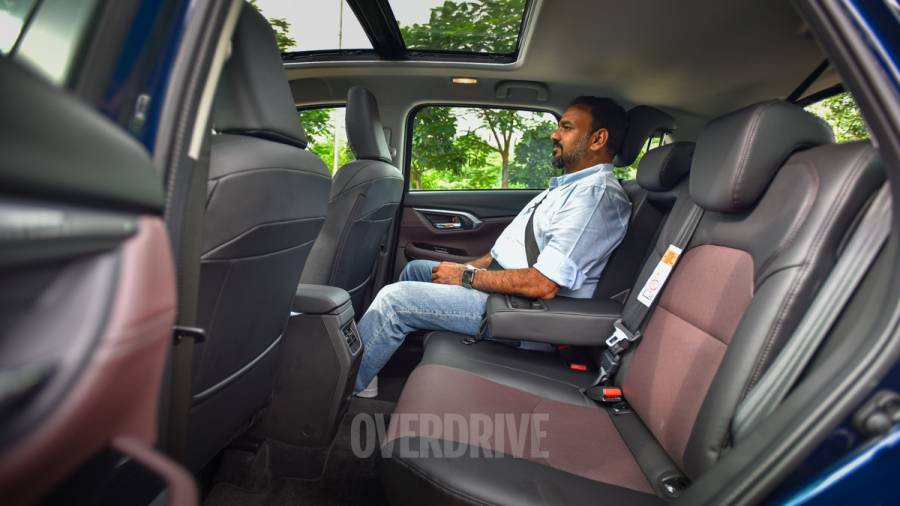
There are few things I would nitpick on and you must watch our video review on YouTube.com/ODmag to see what those are and why.
The bigger concern however is the boot space - a mere 373l for the mild-hybrid variants, which is comparable to sub-4m crossovers - or a scanty 265l for the strong hybrid variant which is lesser than even a Baleno and that's because like most ICE-derived hybrids, the battery pack sits behind the rear seat, eating into the boot space. The hybrid also hides the spare wheel beneath the car, while the smart hybrid plonks it on the boot floor.
Driving dynamics and powertrain options
Like all the cars in the segment, there are quite a few powertrain configurations to choose from. There is a 1.5l four-cylinder petrol with mild hybrid Tech, which is a configuration we have seen in the Ciaz, XL6, Brezza etc. it can be had with a 5-speed manual or a 6AT. The output of the engine is pretty humble at 103PS and 136Nm and that shows. It likes to be driven in a calm and composed manner and irrespective of the gearbox you choose, you will often find yourself doing most of the driving in the 2-3,000rpm mark. The low-end tractability is quite good for the city and on the highway, the car cruises at 80kmph at 2,000rpm or 100kmph at 2,800rpm. All these figures are consistent for the manual as well as the automatic.
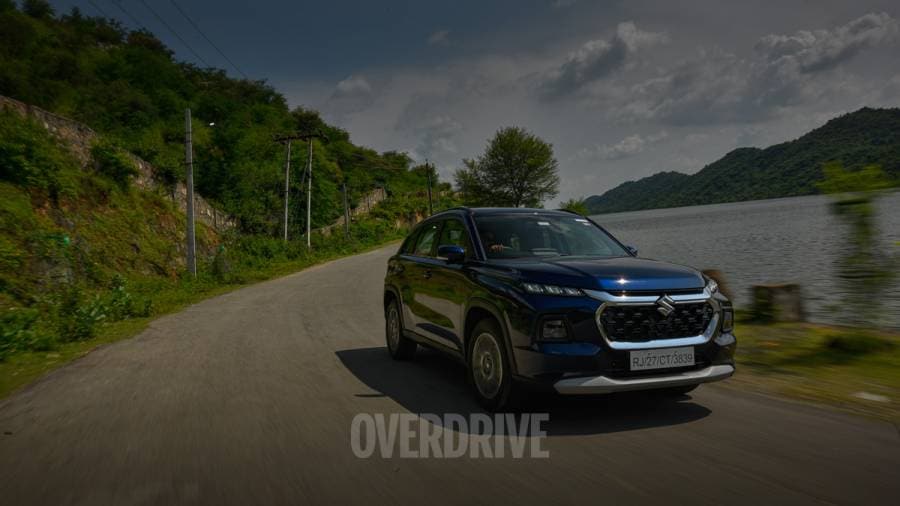
Pulling overtakes at city or highway speeds often needs a downshift. The 6-speed torque converter automatic does its job well in the city or on the highway and its convenience is hard to ignore. But it isn't the quickest of gearboxes and often makes a downshift after the engine falls out of the powerband, so the paddle shifters certainly help if you need to take manual control to pull a quick overtake or engage better engine braking. The 5-speed manual has long throws and clutch pedal travel, and the clutch pedal, though light, has a vague bite point which needs getting used to especially if you are scaling inclines with a full load.
Compared to the international S-Cross, the Grand Vitara features longer suspension travel and more robust components for Indian road conditions. Even with a full load, the ride quality is easily the best we have experienced yet on a Maruti Suzuki. It feels supple over potholed roads even with a full house. Buy this car for its smooth ride over the typically poor Indian road conditions and not for enthusiastic driving. Going hot into a bend or being aggressive with the car around switchbacks often exposes the squishy suspension and the pronounced vertical movement.
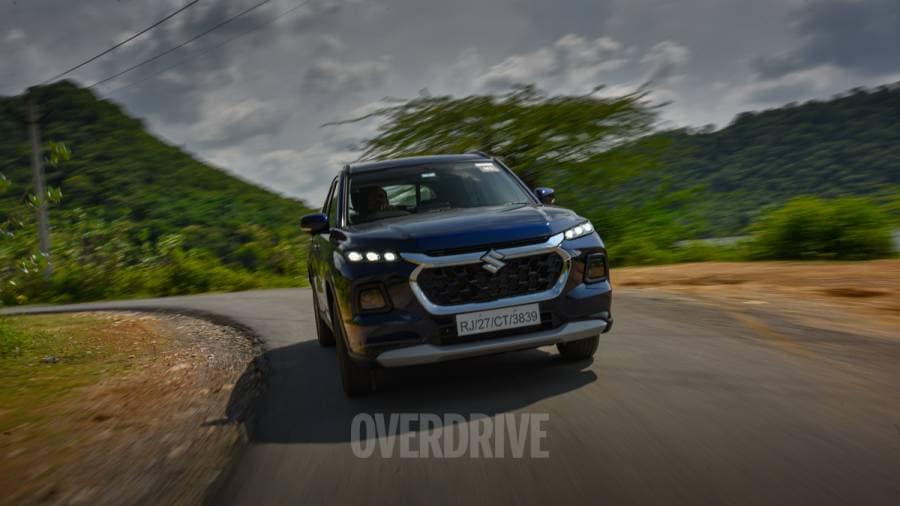
While the Grand Vitara is predominantly front-wheel driven, the 5-speed manual can also be had with an all-wheel-drive system which Suzuki likes to call AllGrip. It is essentially a safety system that will send up to 50% power and torque to the rear wheels for better traction if it detects slip at the front - but it's a tool after all and if used properly it can help the Grand Vitara tackle some pretty rough stuff.

We drove a car on a tailor-made off-road course (watch the video review) where the car easily traversed through slush, scaled inclines and showed off its hill hold function, crawled down with the hill decent control at a preset and fixed 10kmph, showed off its tripod capabilities through the trenches and proved that it's front and rear overhangs weren't a matter of worry and 25° approach and departure angles could be tackled with ease. The only downside is that the AllGrip is available only on the manual and in the hot conditions of Udaipur the clutch was heating up quickly and becoming difficult to modulate on this obstacle course. But it's impressive how this safety-biased AWD works around the tricky stuff.
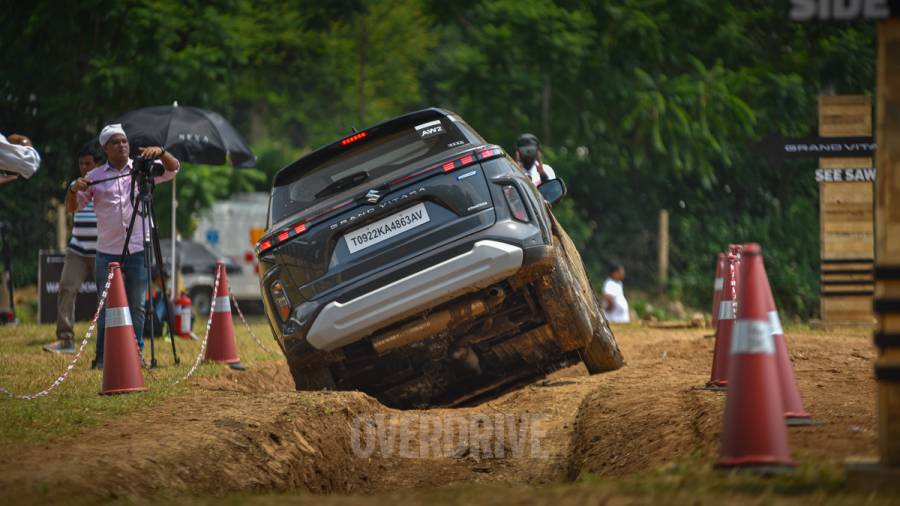
One bummer though is that you get AWD lock only in the snow mode and that restricts power and dulls the throttle response. Ideally, they should have allowed the AWD to be locked independently to give the driver more control over the situation. But then again, this is an urban cruiser of sorts, so it may not venture out into the wild that often.
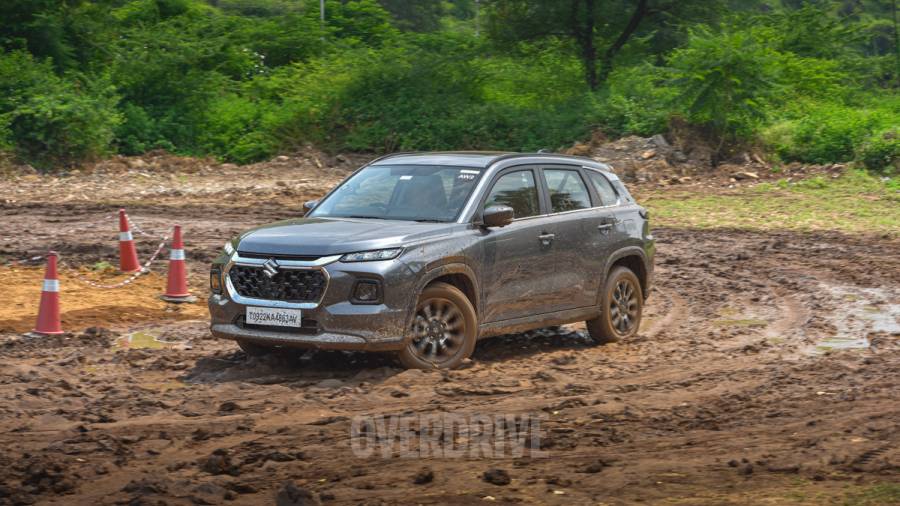
The 360° camera also helps while driving on such terrain and I wish the tyre pressure monitoring system was available with the AWD. Furthermore, Maruti could have managed to get even more ground clearance for its smart hybrid by having a cleaner layout for the exhaust piping like how Toyota has managed with the strong hybrid.
Apart from the AWD, the strong Hybrid is the other big talking point for the Grand Vitara. As you would expect, the hybrid comes to life rather silently and can even start off in pure EV mode provided there is enough juice in the battery pack. While there is a dedicated EV-only mode too, how much range you will get out of it at city speeds depends on the state of charge of the batteries. 3-4kms at best is my estimate.
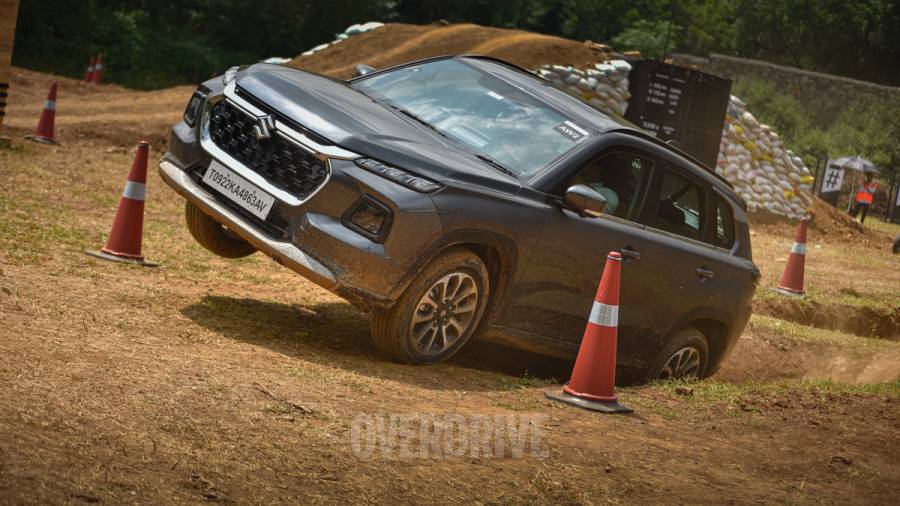
Unlike the Honda City hybrid we sampled recently, Grand Vitara (and Hyryder) use a strong hybrid system similar to the Toyota Camry where the engine and the electric motor can power the wheels as and when required to ensure a seamless supply of power and torque across various driving scenarios - so you never feel the dearth of power even with a full house, while ensuring exceptional fuel economy.
That said, with a combined system output of 115PS, even the strong hybrid variant of the Grand Vitara is pretty humble. Expect a 0-100 figure of around 12s - give or take. There is a Power driving mode which is best suited for driving around bends or inclines as it manages a better power and torque delivery, but the eCVT configuration will often make the engine rev high. Even in the Power driving mode, it doesn't have the eagerness of the powertrain we sampled in the Hector mild-hybrid for example, but the fuel economy gains of this strong hybrid far outweigh the lack of enthusiasm. A good driver will extract over 18kmpl in the dulled Eco mode in all driving scenarios and with that, the Grand Vitara suddenly feels like the Best Buy in the segment.
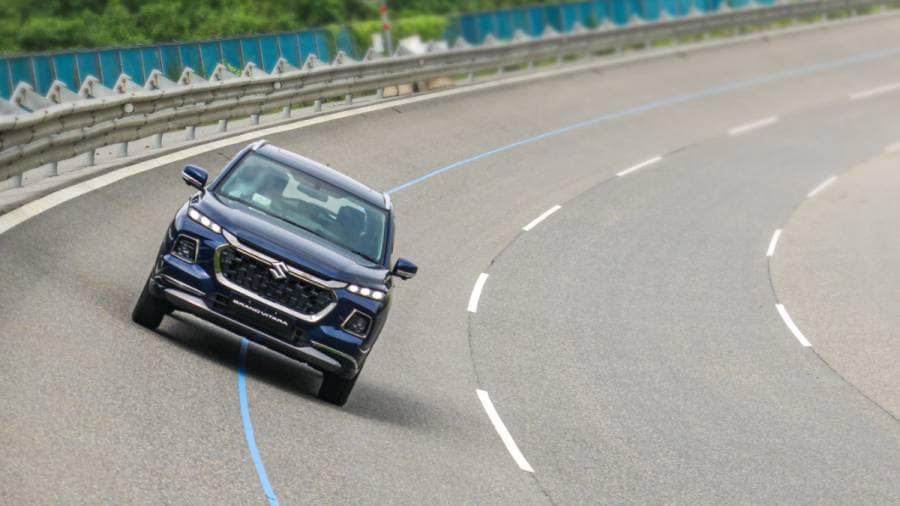
While the fully localised 1.5l four-cylinder engine with the mild hybrid and all-wheel-drive are tech that belongs to Suzuki, the imported three-cylinder 1.5l petrol with strong hybrid tech is what Toyota has brought to the table as a part of the alliance. Choosing either will get you a lifetime warranty on the batteries, and Toyota or Maruti can easily afford to do that because even the 0.76kWh lithium-ion battery pack in the strong hybrid is relatively inexpensive and is a quick charging/discharging unit unlike the far denser and complex batteries in full-fledged EVs.
The small batteries also mean that the Strong Hybrid is only about 80-85kg heavier than the mild-hybrid 2WD variants and the additional weight is never a concern. The braking seems consistent and predictable across all the variants and the strong hybrid also gets a dedicated B mode for stronger braking assistance from the powertrain, should you need it while driving downhill for example.
Though this strong hybrid belongs to Toyota, all the tuning for the mild-hybrid, strong-hybrid and even the suspension and brakes is done by Maruti Suzuki and Toyota's job is to simply manufacture both, the Grand Vitara and the Hyryder. Toyota say that their plant at Bidadi near Bengaluru can roll out 160,000 units of these two cars every year. Filling up those order books won't be difficult for the two brands given how potent this package is.
I'm quite content with all the powertrain options on offer and while neither feels enthusiastic, they all feel adequate, refined and aptly tuned for Indian driving conditions. The Strong Hybrid makes a strong case for itself and the pricing is competitive enough for those missing a diesel in the lineup.
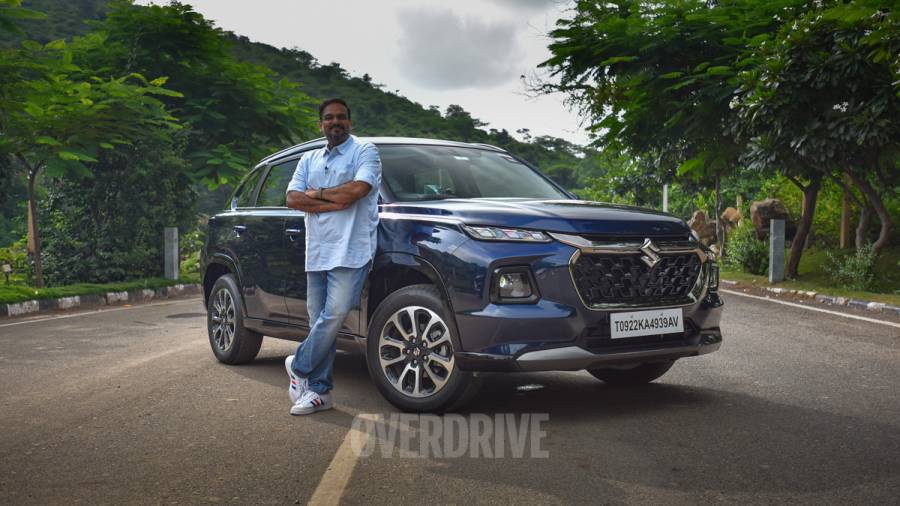
If I had to choose the Strong Hybrid, I think I would go with Toyota at the moment given their history of selling and servicing hybrid cars in India. I also think the comparatively elegant design goes better with the sensibility of the Hybrid powertrain. But if I'm going with any of the other powertrains, the sportier-looking Grand Vitara is what I would choose. The name also sounds cooler and the car looks good even when it gets dirty. Let me know what's your pick.
-NA-
-NA-
103.06
-NA-
-NA-
Starts Rs 10.9 Lakhs
1497cc
Manual
100
145
17.8 Kmpl
Starts Rs 12.9 Lakhs
1496cc
Manual
143
250
15.8 Kmpl
Starts Rs 1.19 Crore
3996cc
Automatic
550
770
11.9 Kmpl
Starts Rs 13.69 Lakhs
1956cc
Automatic
170
350
-NA-
Starts Rs 41.7 Lakhs
2487cc
Automatic
218
221
-NA-
-NA-
1462cc
Manual
101.9
135
-NA-
